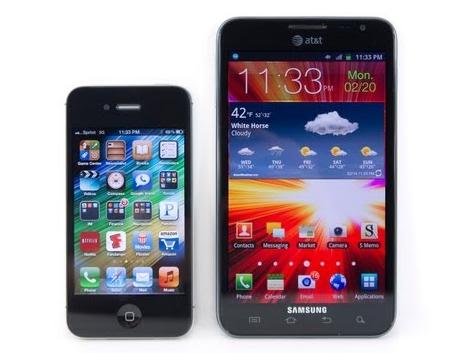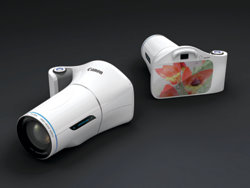Oh how I love my DSLR camera. Whether I’m conducting a professional photo shoot for a client, or just taking pictures with friends at the beach, I know the results will be fantastic. With a large sensor and interchangeable lens system, these highly detailed photos will look great on their own, or easily edited in post on my computer. It can also shoot video in 1080p, perfect for HDTV’s and the web. Having such quality functions in my camera has been so nice, considering I used to have a digital camera and a camcorder, neither of which ever achieved the results I so desperately longed for. Then something happened: The smartphone emerged and it has considerably challenged the concept of what a phone, or camera can actually do.

For example, the Nokia N8 smartphone can take a 12 megapixel photo, and also shoot 1080p. That’s great from a technological standpoint, but my DSLR still takes better photos and video anyway so that’s nothing special to me. But it’s everything my camera doesn’t do that makes the smartphone so desirable and unique. It’s essentially a hyper portable computer with a high-res camera built in. I can browse the internet, send emails and text messages, get directions, edit video and photos, and more. My camera should start shaking in its’ boots, and rightfully so, the smartphone is a much more functional and portable device.
Every year smartphones get thinner, more powerful, and with yearly upgrades to operating systems, there seems to be no end to the innovation and functionality of these devices. I also carry it around with me everywhere, something that cannot be said about my DSLR; it’s kinda big, I usually have to carry a bag around with a few lenses, extra batteries, filters, etc. Now, I have a device that allows me to take photos and video, edit them and email or upload to my social network directly. That’s a lot quicker and easier than popping out a memory card, inserting it into my computer, downloading the files, then organizing and importing into the appropriate program to edit, export, and re-upload online or wherever.
You would think camera makers would be scrambling desperately trying to add these functionalities into their cameras, I mean the technology is there, and in a much smaller form factor. Unfortunately this is not the case, as we usually just get faster auto focus, higher mega-pixel counts, and higher prices. Pretty soon the quality from these small devices is going to rival that of a DSLR, and if companies don’t act soon, people will eventually move away from the format all together. This is a huge shame, and it looks like camera companies could take a lesson or two from the advent of the smartphone.
Perhaps camera companies are going to have to convince people they need a DSLR if they want professional quality, and the way to do that is to take three very important steps. First, they need to put aside for a moment everything they know about the history of cameras; second, catch up to smartphones and start integrating new technologies into cameras; and third, learn how to evolve and change with the demanding needs of the consumer. Here’s a couple of suggestions:.
1. Built in WiFi. This is a no-brainer. Being able to send a video or photo over the internet directly from the camera would exponentially increase the functionality of the DSLR. No more 4GB Wi-Fi SD cards please.
2. Developer software support. Allow developers to design applications for the camera. You don’t have to give them access to everything, but things like custom picture profiles would be a start, along with support from social networks like Facebook, Twitter, YouTube, Vimeo, etc. They do it very well already, let them have control. It’s going to be okay. I promise.
3. USB 3.0 or Thunderbolt support. We need faster direct to computer transfer speeds, especially now that SDXC cards support up to 128GB. Transferring a full card of 1080p video will certainly take a while if you have to rely on a card reader or USB 2.0.

What the camera companies need to take away the most from the smartphone is actually right in the name: Smartphone. It’s not a phone, or a feature phone, or a music phone, but a smart phone. It does more than what was ever thought possible in a handheld device, and now everyone has one or wants one. Just look at what happened to Kodak. By being too conservative, too hesitant to innovate and change with the times, they were left behind and now forced to try and keep a faltering company afloat with lawsuits and back room deals.
It’s time to start thinking of how you can make your DSLR a SmartDSLR and stop thinking that a camera has to be only a camera or you too will be left behind for something better. What smart innovations would you like to see added to DSLRs?
“If you don’t cannibalize yourself, someone else will.” – Steve Jobs
